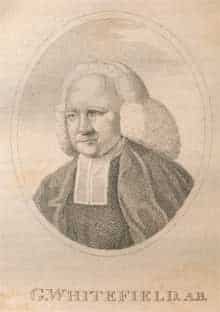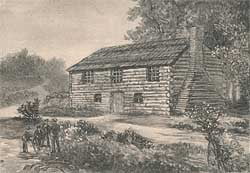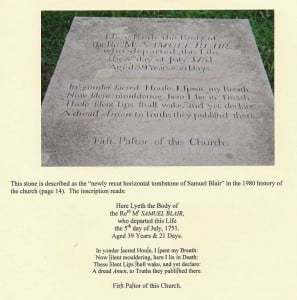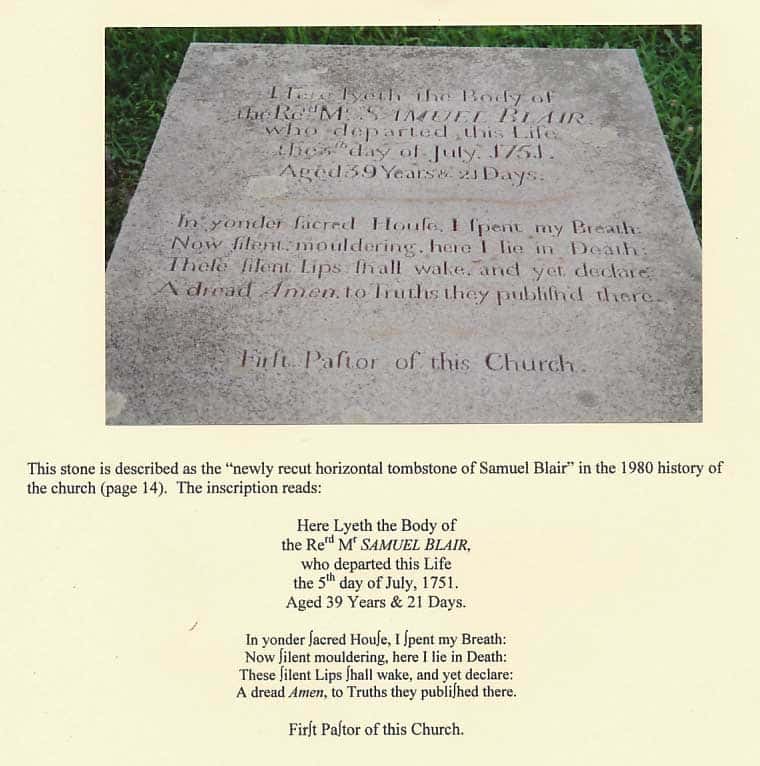Ready and willing to go for Christ . . . anywhere
 The young Irish salesman was sparring verbally with the small group of college students. Only he was doing it in Latin, remembered from his classical education classes of his youth in Northern Ireland. Sensing his gifts, the head master of the Log College, the Rev. William Tennent, challenged the salesman to sell all of his wares and study for the ministry. Charles Beatty did just that, entering the Log College in Bucks County, Pennsylvania.
The young Irish salesman was sparring verbally with the small group of college students. Only he was doing it in Latin, remembered from his classical education classes of his youth in Northern Ireland. Sensing his gifts, the head master of the Log College, the Rev. William Tennent, challenged the salesman to sell all of his wares and study for the ministry. Charles Beatty did just that, entering the Log College in Bucks County, Pennsylvania.
Charles was born in County Antrim, Northern Ireland in 1712. His parents were John Beatty, a British Army officer, and Christiana Clinton Beatty. His early home education was in theology in a classical Christian education setting. At age 14, his father died. We are not told how he came to “own” Christ, but he traveled to the American colonies with his Uncle Charles Clinton in 1729, to Philadelphia, Pennsylvania.
Studying at the Log College, he was licensed to preach by the Presbytery of New Brunswick on October 13, 1742, and ordained the same year on December 14, 1742.
For a while, he assisted the Rev. Tennent at his congregation, and finally assumed the pulpit upon the latter’s death in 1743. Three years later, he married Anne Reading, with whom he would have ten children. She must have been a remarkable woman, as her husband and their father would be gone many years on mission trips. With very few Presbyterian ministers in the colonies, he was called first by the Synod of New York to travel to Virginia and North Carolina in 1754, preaching to the scattered Scot-Irish Presbyterian families.
But the westward expansion then going on in Pennsylvania also attracted his heart. He would make two trips in 1758 and 1766 to that frontier of Cumberland County, which extended then all the way to Pittsburgh. The first trip in 1758 was as chaplain to the army of General Forbes, with Col. Chapman’s Pennsylvania regiment. He would preach the first Protestant sermon west of the Allegheny Mountains.
The second trip with the Rev. George Duffield of Carlisle’s First Presbyterian Church in 1766. Their purpose was to report on the numbers of Presbyterian families then pushing west, for the purpose of establishing presbyteries to minister to those hardy pioneers. Accompanying them was a Christian Indian by the name of Joseph Peppy, who was a valued interpreter when they established contact with the Indian tribes in the area. They found numerous Presbyterian families, including around Fort Pitt itself.
Charles Beatty was involved in relief work as well. Twice he took trips to England to raise funds for the Corporation for the Relief of Distressed Presbyterian Ministers.
Leaving “home missions,” Beatty sailed for the Barbados to minister the Word there, only to be called to his heavenly home on August 13, 1773.
Words to Live By:
Charles Beatty was a man who for the sake of the gospel was content to be used for Christ’s kingdom. Reader: is God’s Spirit calling you to a similar ministry of service for our Lord and Savior Jesus Christ? In Matthew 9:37, 38, Jesus says, “The harvest is plentiful, but the laborers are few; therefore pray earnestly to the Lord of the harvest to send out laborers in his harvest.” (ESV)






